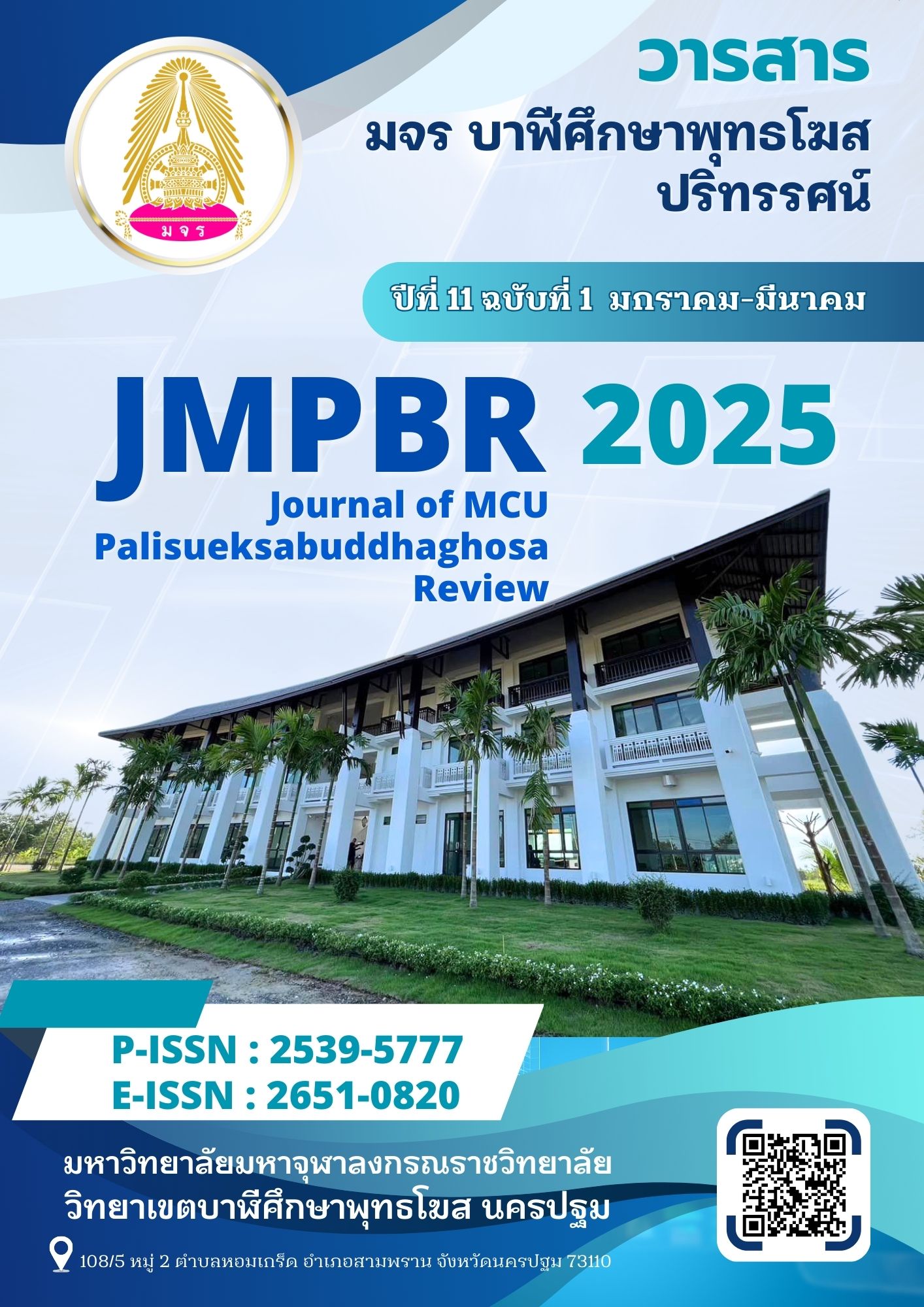Philosophical doctrines of Brahmin-Hinduism
Main Article Content
Abstract
This article aims to investigate the philosophical teachings of Brahmin-Hinduism, starting from the emergence of the Aryan civilization and the evolution of belief systems in different societal epochs. Brahman is revered as the ultimate deity throughout the ages. The Vedas are the primary scriptures, with Brahman serving as the intermediary between gods and humans. Key teachings include the four principles of conduct, the principles of conduct between individuals, the principles of Paramatman and principles of liberations. Philosophical concepts from the six schools of thought, namely Nyaya, Vaisheshika, Samkhya, Yoga, Mimamsa, and Vedanta, encompass beliefs regarding Brahman and in accordance with the philosophical teachings of Brahmin-Hinduism.
Article Details

This work is licensed under a Creative Commons Attribution-NonCommercial-NoDerivatives 4.0 International License.
Copyright Notice
The content and information in the articles published in Journal of MCU Palisueksabuddhaghosa Review, are regarded as opinions and responsibilities of article author only. It definitely does not mean that the editor must agree or share any responsibility to the author.
Articles, information, content, figure etc. that have been published in the Journal of MCU Palisueksabuddhaghosa Review is considered as the copyright of the Journal. If any individual or organization will to bring any parts of article for promote or to do anything, must be licensed only in official form from the Journal of MCU Palisueksabuddhaghosa Review.
The content and information in the articles published in Journal of MCU Palisueksabuddhaghosa Review, are regarded as opinions and responsibilities of article author only. It definitely does not mean that the editor must agree or share any responsibility to the author.
Articles, information, content, figure etc. that have been published in the Journal of MCU Palisueksabuddhaghosa Review is considered as the copyright of the Journal. If any individual or organization will to bring any parts of article for promote or to do anything, must be licensed only in official form from the Journal of MCU Palisueksabuddhaghosa Review.
References
เดือน คำดี. (๒๕๓๑). ศาสนาเบื้องต้น. กรุงเทพมหานคร: ภาควิชาปรัชญาและศาสนา คณะมนุษยศาสตร์ มหาวิทยาลัยเกษตร์ศาสตร์.
ทองหล่อ วงศ์ธรรมา. (๒๕๓๕). ปรัชญาอินเดีย. กรุงเทพมหานคร: โอเอสพริ้นติ้งเฮาร์.
บุญมี แท่นแก้ว. (๒๕๔๖). ประวัติศาสนาต่างๆและปรัชญาธรรม. กรุงเทพมหานคร: โอเอสพริ้นติ้งเฮาร์.
________. และคณะ. (๒๕๒๙). ปรัชญาเบื้องต้น. กรุงเทพมหานคร: โอเดียนสโตร์.
ประทีป สาวาโย. (๒๕๔๕). สิบเอ็ดศาสนาของโลก. กรุงเทพมหานคร: โอเดียนสโตร์.
ประยงค์ แสนบุราณ. (๒๕๔๗). ปรัชญาอินเดีย. กรุงเทพมหานคร: โอเอสพริ้นติ้ง.
ประเวศ อินทองปาน. (๒๕๕๓). พุทธปรัชญาในพระไตรปิฎก. พิมพ์ครั้งที่ ๓. กรุงเทพมหานคร: สำนักส่งเสริมและฝึกอบรมมหาวิทยาลัยเกษตรศาสตร์.
ไพฑูรย์ พัฒน์ใหญ่ยิ่ง. (๒๕๓๐). ความคิดสำคัญในปรัชญาอินเดีย. กรุงเทพมหานคร: โอเอสพริ้นติ้งเฮาร์.
ฟื้น ดอกบัว. (๒๕๔๕). ปวงปรัชญาอินเดีย. กรุงเทพมหานคร: ธรรมสาร.
มหาจุฬาฯ วิชาการ. ๒๕๓๒. พุทธศาสตร์และสังคมศาสตร์. กรุงเทพมหานคร: มหาจุฬาลงกรณราชวิทยาลัย.
ราชบัณฑิต. (๒๕๔๖). พจนานุกรมฉบับราชบัณฑิตยสถาน พ.ศ.๒๕๔๒. กรุงเทพมหานคร: ศิริวัฒน์อินเตอร์พริ้น.
สมภาร พรมทา. (๒๕๔๑). ภควัทคีตา (บทเพลงแห่งองค์ภควัน). พิมพ์ครั้งที่ ๒. กรุงเทพมหานคร: ธรรมสาร.
สมัคร บุราวาศ. (๒๕๑๖). ปรัชญาพราหมณ์สมัยพุทธกาล. กรุงเทพมหานคร: อักษรไทย.
สุนทร ณ รังษี. (๒๕๓๗). ปรัชญาอินเดีย: ประวัติและลัทธิ. พิมพ์ครั้งที่ ๒. กรุงเทพมหานคร: จุฬาลงกรณ์มหาวิทยาลัย.
สุมาลี มหณรงค์ชัย. (๒๕๖๒). ทางสายกลางแบบพุทธพราหมณ์เชน. กรุงเทพมหานคร: ศยาม.
อดิศักดิ์ ทองบุญ. (๒๕๔๐). ปรัชญาอินเดียร่วมสมัย. กรุงเทพมหานคร: ราชบัณฑิตยสถาน.
อารี วิชาชัย. (๒๕๔๓). ปรัชญาธรรมของศาสนาพราหมณ์-ฮินดู. กรุงเทพมหานคร: ภาควิชาปรัชญาและศาสนา คณะมนุษยศาสตร์มหาวิทยาลัยศรีนครินทรวิโรฒ.

